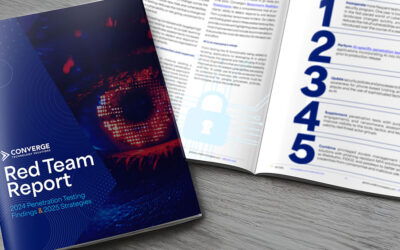Blog
Read the latest from our dedicated experts.
Redefining the Future of Work with Cisco Hybrid Work Solutions
The concept of work is shifting fundamentally, driven by the rise of hybrid environments and the pursuit of...
The Hybrid Work Revolution: Transforming the Future Workplace
Few changes in the business world have been as defining or enduring as the rise of hybrid work. Initially...
CMMC Compliance: Why It’s Essential for National Security and Your Business Success
Achieving Cybersecurity Maturity Model Certification (CMMC) compliance is more than meeting a regulatory...
Preparing Your Telehealth Infrastructure for the Next Era of Digital Healthcare Trends
The same infrastructure used to support the basic form of telehealth that skyrocketed in popularity during...
Inside the Converge Red Team Report: 2024 Penetration Testing Findings & 2025 Strategies
Red team penetration testing is vital for organizations looking to stay ahead of constant and evolving...
Key Insights from the ISACA 2025 State of Privacy Report
How are privacy leaders adapting to growing demands, shifting collaboration opportunities, and advancing...
Follow Us
Recent Posts
IBM Planning Analytics Version 2.0.9.x End of Support: What to Know
The IBM Planning Analytics version 2.0.9.x end of support date is October 31, 2025. With that date on the horizon, IT and finance teams using this powerful analytics platform need to begin planning their upgrade path now. IBM Planning Analytics, powered by the trusted...
The Future of Communication is Here: Cisco Cloud Calling as a Business Game-Changer
The evolution of communication technology has reached a critical inflection point. No longer confined by hardware-heavy legacy systems, businesses are finding new ways to connect, collaborate, and compete in an increasingly digital world. At the center of this...
Redefining the Future of Work with Cisco Hybrid Work Solutions
The concept of work is shifting fundamentally, driven by the rise of hybrid environments and the pursuit of more connected, resilient, and innovative organizational ecosystems. Yet, the most forward-thinking companies recognize that hybrid work isn’t just about...






